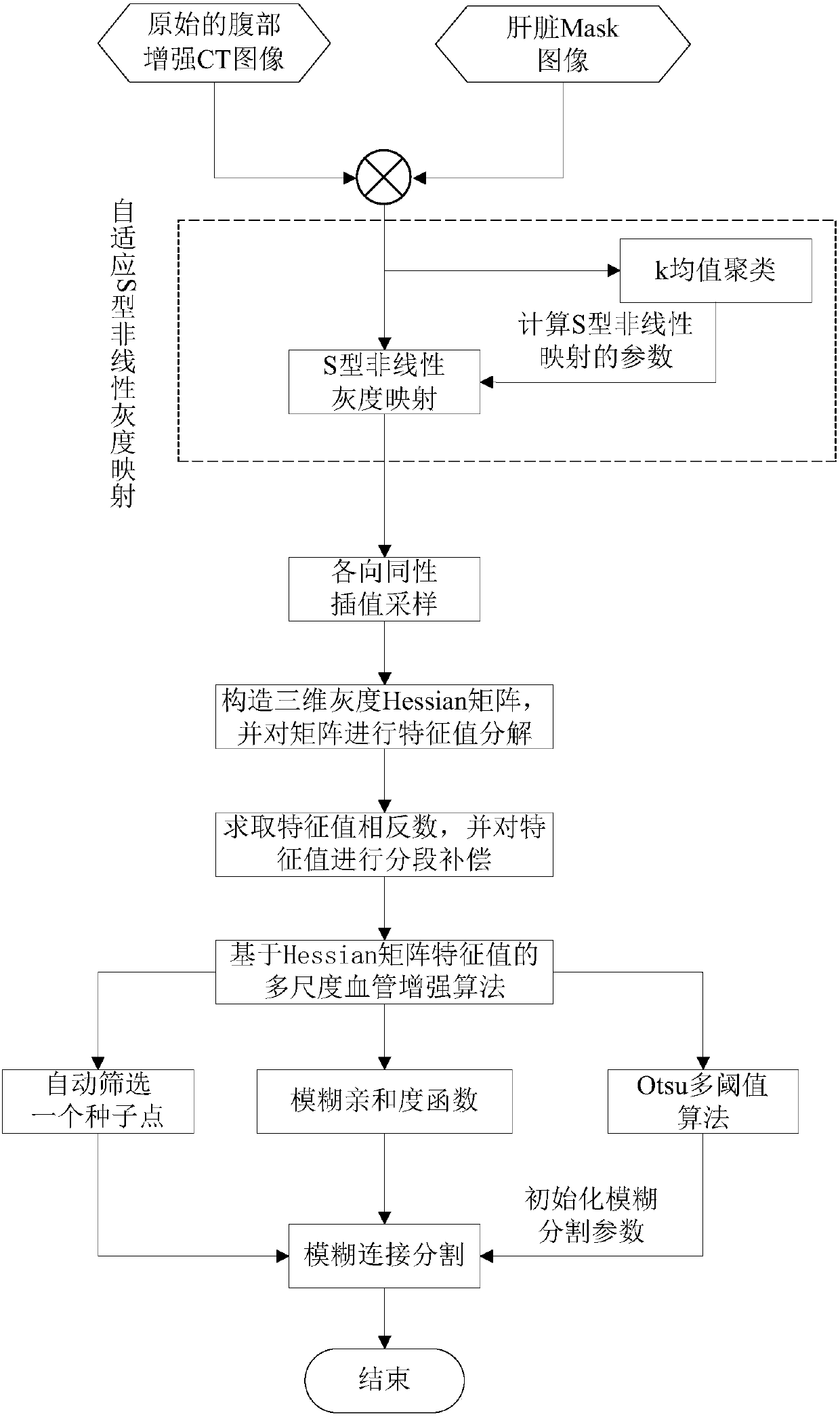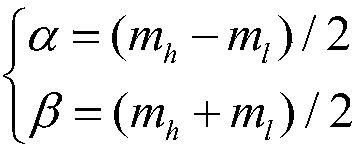CT image-based hepatic blood vessel three-dimensional segmentation method
A technology for liver blood vessels and CT images, applied in the field of image processing, can solve the problems of under-segmentation of segmentation results, long processing time, and unsuitability for clinical use.
- Summary
- Abstract
- Description
- Claims
- Application Information
AI Technical Summary
Problems solved by technology
Method used
Image
Examples
Embodiment Construction
[0035] like figure 1 As shown, the present invention provides a method for three-dimensional segmentation of liver blood vessels based on CT images, comprising the following steps:
[0036] 1. A case of human abdominal cavity enhanced CT image I O with the corresponding liver mask image I lMask Carry out logical AND operation to obtain the image I of the region of interest in the liver VOI , liver mask image I lMask The acquisition of can refer to the relevant liver segmentation algorithm.
[0037] 2. For Image I VOI Adaptive S-shaped nonlinear grayscale mapping to obtain 3D VOI image with enhanced contrast of liver vessels I S . The specific implementation is as follows:
[0038] 1) Image I of liver region of interest VOI Carry out k-means clustering, the number of cluster centers is 5, and the image I is obtained k .
[0039] 2) Image I k According to the gray intensity of the cluster center, it is divided into 5 regions from low to high. Region 1 represents the bac...
PUM
 Login to View More
Login to View More Abstract
Description
Claims
Application Information
 Login to View More
Login to View More - R&D
- Intellectual Property
- Life Sciences
- Materials
- Tech Scout
- Unparalleled Data Quality
- Higher Quality Content
- 60% Fewer Hallucinations
Browse by: Latest US Patents, China's latest patents, Technical Efficacy Thesaurus, Application Domain, Technology Topic, Popular Technical Reports.
© 2025 PatSnap. All rights reserved.Legal|Privacy policy|Modern Slavery Act Transparency Statement|Sitemap|About US| Contact US: help@patsnap.com



